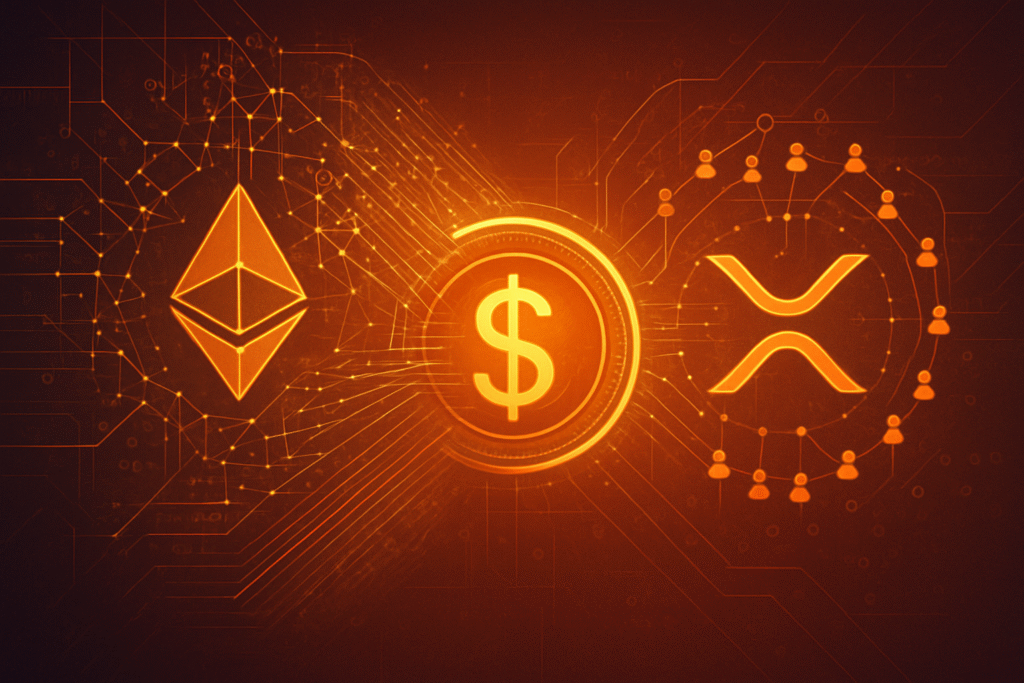
San Francisco, CA – October 3, 2025 – Ripple's (private) stablecoin, RLUSD, launched in December 2024, has rapidly carved out a significant niche in the digital asset landscape. However, recent data paints a compelling picture of its multi-chain strategy: an overwhelming 88% of RLUSD's total supply is currently circulating on the Ethereum network, while a striking 85% of its individual holders reside on the XRP Ledger (XRPL). This unique distribution highlights Ripple's dual-pronged approach to liquidity and user engagement, simultaneously tapping into Ethereum's expansive DeFi ecosystem and XRPL's efficient transaction capabilities.
The immediate market reaction to this pronounced imbalance has been a mix of strategic appreciation and community unease. While analysts laud Ripple's foresight in ensuring broad accessibility for RLUSD, a segment of the XRP community has expressed disillusionment. Many anticipated a more direct synergy between the new stablecoin and XRP's utility on its native ledger. This dynamic raises crucial questions about the future interplay of stablecoins and native assets within a multi-chain paradigm, underscoring the complexities of fostering interconnected yet distinct blockchain ecosystems.
Market Impact and Price Action
As of early October 2025, RLUSD boasts a market capitalization nearing $789 million, a testament to its swift adoption since its December 2024 launch. The distribution figures reveal that over $700 million of this supply is on Ethereum, with less than $90 million residing on the XRPL. This heavily skewed supply distribution towards Ethereum is a significant shift from earlier 2025 reports, which showed XRPL briefly gaining ground in terms of RLUSD growth rate.
While RLUSD, as a stablecoin, is designed to maintain its 1:1 peg with the U.S. dollar, its distribution has notable implications for related assets, particularly XRP. Many XRP holders had hoped that the introduction and growth of RLUSD would directly boost demand for XRP, as every transaction on the XRPL requires a small fee paid in XRP. However, with the vast majority of RLUSD supply and therefore, transactional volume, occurring on Ethereum, XRP's direct utility for RLUSD-related activities is largely bypassed. This has contributed to the "unease" within the XRP community, as the expected positive impact on XRP's burn rate and utility has been limited by RLUSD's Ethereum dominance. Ripple has attempted to manage liquidity across chains, as evidenced by an August 2025 operation involving burning 20 million RLUSD on Ethereum and simultaneously minting it on XRPL, aiming to strengthen its presence there. However, the fundamental dynamics of supply distribution remain.
Community and Ecosystem Response
The stark contrast in RLUSD's supply and holder distribution has fueled considerable discussion across social media platforms and crypto forums. Sentiment among a segment of XRP holders, in particular, has been marked by "disillusionment," stemming from the perception that RLUSD's success, especially on Ethereum, does not directly translate into increased utility or demand for their native token, XRP. Crypto influencers and thought leaders have weighed in, with Chainlink community liaison Zach Rynes, for example, noting that RLUSD on Ethereum largely displaces the need for XRP for cross-border transactions and that XRP holders do not directly benefit from RLUSD revenue.
Despite these concerns, RLUSD's multi-chain presence has undeniably broadened its reach and utility within the broader crypto ecosystem. Its significant supply on Ethereum allows for seamless integration with established DeFi protocols such as Uniswap, Aave, and Curve, making it a highly composable asset within the largest decentralized finance landscape. This strategy makes RLUSD attractive to developers and institutions seeking broad accessibility. Conversely, the high percentage of holders on XRPL, totaling over 31,000 out of 36,878, suggests that the XRPL is favored by individual users and potentially smaller institutions for holding and transacting RLUSD. XRPL's advantages, including lower transaction fees and faster settlement speeds, likely contribute to this preference for everyday use and peer-to-peer payouts. Ripple's active management of liquidity between chains also indicates a commitment to fostering a robust environment for RLUSD on both networks.
What's Next for Crypto
The trajectory of Ripple's RLUSD offers several key insights into the evolving landscape of stablecoins and multi-chain strategies. In the short term, RLUSD is poised for continued growth in market capitalization and adoption, driven by its institutional focus and expanding listings across major exchanges like Uphold, Bitso, MoonPay, Kraken (private), and Bybit (private). Its compliance-first design, backed by independent monthly audits and operating under a New York Department of Financial Services (NYDFS) Trust Company Charter, positions it as a "regulatory gold standard" in the stablecoin space, attracting regulated entities and traditional finance players.
Longer-term implications suggest a potential rebalancing of RLUSD supply across chains. While current institutional integrations, such as with BlackRock's (NYSE: BLK) BUIDL and VanEck's (private) VBILL tokenized funds, initially leverage Ethereum, Securitize (private), the tokenization platform, has confirmed plans for future integration with the XRP Ledger. Such developments could gradually shift a portion of RLUSD's supply to the XRPL, potentially alleviating some of the community concerns regarding XRP's utility. Strategically, Ripple's commitment to a multi-chain future, with RLUSD acting as a bridge between traditional finance and blockchain, underscores a vision where different blockchains serve distinct but complementary roles. Investors and projects should monitor these integrations closely, as they will determine the ultimate balance of utility and liquidity across both networks.
Bottom Line
Ripple's RLUSD has successfully cemented its position as a compliant, institution-focused stablecoin, rapidly achieving a substantial market capitalization since its December 2024 launch. Its innovative multi-chain strategy, distributing supply predominantly on Ethereum while fostering a large holder base on XRPL, highlights a sophisticated approach to maximizing liquidity and user engagement. This model effectively leverages Ethereum's vast DeFi ecosystem for institutional capital and composability, while utilizing XRPL's efficiency for a broad base of individual and smaller institutional holders.
The long-term significance of RLUSD lies in its potential to accelerate crypto adoption by bridging traditional finance with the blockchain world. Its regulatory clarity and rigorous backing by U.S. dollar reserves set a high standard for stablecoin trustworthiness, which is crucial for attracting institutional capital. However, the ongoing debate within the XRP community regarding the direct benefits of RLUSD to XRP's utility remains a critical point of contention. As Ripple President Monica Long stated, RLUSD is intended to be "complementary and additive" to XRP, but the current distribution raises questions about how this complementarity will manifest in practice. Key metrics to monitor include the continued growth of RLUSD's market cap, any future rebalancing of its supply between Ethereum and XRPL, and further institutional integrations, particularly those that might directly leverage the XRP Ledger. The evolution of RLUSD will be a crucial case study in how stablecoins navigate the complexities of a multi-chain future and manage community expectations around native token utility.
This article is for informational purposes only and does not constitute financial or investment advice. Cryptocurrency investments carry significant risk.






